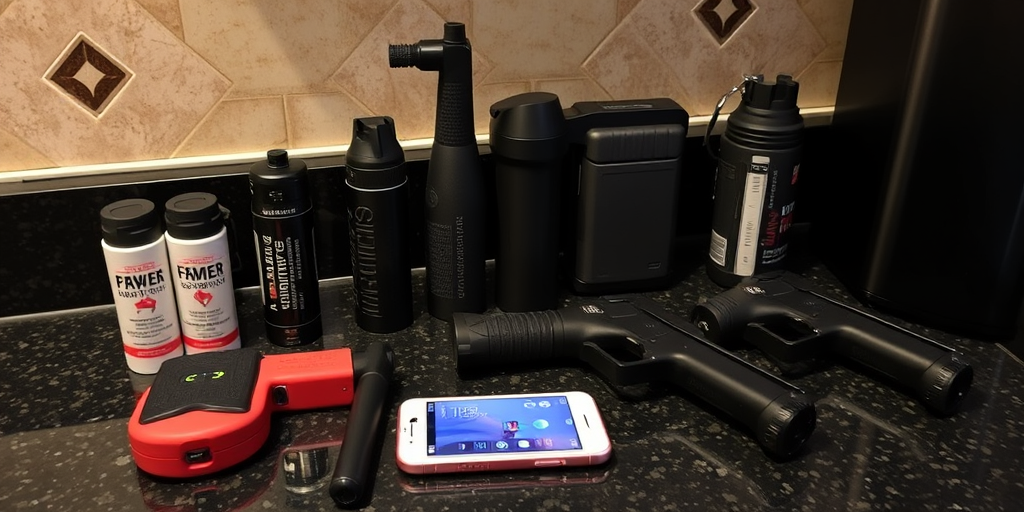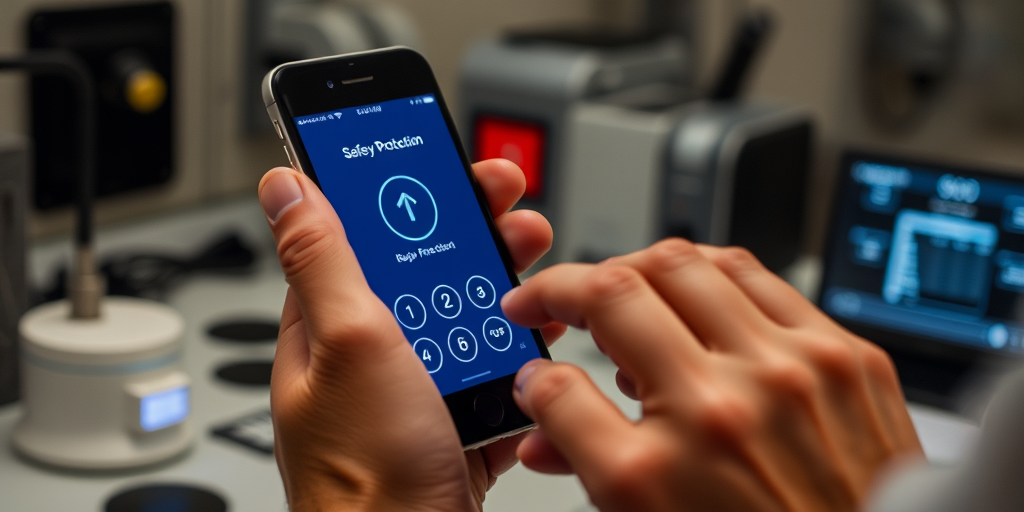Want to protect yourself better? That’s important because in today’s unpredictable world, the pursuit of personal safety has evolved into a sophisticated blend of tech and tactical design. Devices that once resembled gadgets now offer powerful, rapid-response defense solutions—from wearable alarms to high-concentration deterrents.
This article dissects the cutting-edge mechanisms behind these devices and explores how they empower users to secure their safety efficiently. Prepare to dive into an expert analysis that demystifies the advantages and limitations of today’s ultimate personal protection devices.
Comparing Features: What is the Best Personal Protection Device for Modern Needs?

Modern personal protection devices blend cutting-edge technology with tactical design, offering features designed for rapid response and reliability. Devices like the Double Trouble stun gun by Zap, the taser gun with enhanced targeting options, and the Yellow Jacket smartphone case, which integrates stun functionality into an everyday accessory, demonstrate diverse design philosophies. Each device category serves different operational needs while advancing the concept of a superior defensive accessory by merging technology with practical usability.
In comparing these models, pros and cons emerge for each device category. For example, the Zap stun gun delivers 1.2 million volts through a contoured design, the taser gun features laser sights and LED lights for increased accuracy in low-light conditions, and the Yellow Jacket case provides dual-functionality as both a phone accessory and a stun device.
Consider the following detailed pros and cons:
- Pros:
- High voltage output enables rapid incapacitation.
- Ergonomic designs ensure a secure grip under stress.
- Enhanced lighting features improve targeting in adverse conditions.
- Dual-functionality in a smartphone accessory increases everyday utility.
- Quick activation mechanisms facilitate immediate defense.
- Cons:
- Bulky construction can reduce overall portability.
- Battery dependency may limit operational duration.
- Integrated designs may compromise primary device functionalities.
- Varying maintenance requirements affect long-term reliability.
- Accidental activation risk may necessitate additional safety features.
| Device | Key Feature |
|---|---|
| Zap Stun Gun | 1.2 Million Volt Output |
| Taser Gun | Laser Sights and LED Lights |
| Yellow Jacket Case | Integrated Stun Capability |
Synthesis of these features indicates that while each device offers advanced defensive capabilities, the best personal protection device depends on the specific operational context and user requirements. Choices may hinge on factors such as the user’s preference for discreet design, need for integrated technology, or reliance on robust and high-voltage output.
Precision in design elements like rapid activation and multi-functionality underpins their effectiveness in modern threat environments. Evaluating these trade-offs through a comparative risk reducer lens can help users select a device that is both technically advanced and tailored to their personal defense needs.
Military-Grade Innovations and Technology Behind the Best Personal Protection Device

Military technology has become the cornerstone for advancing personal protection devices, with innovations drawing directly from battlefield-tested designs. Cutting-edge products now incorporate modern barrier technology, tactical protection mechanisms, and digital shield technology to meet evolving security challenges.
The excore gun lock, a new design from Israel priced at $179.90, demonstrates rapid activation through a custom dial sequence, while the miniature 1911 replica features a working trigger and disassembly capability that reflects authentic military influences. Additionally, the UMX HDX t4e pump action rifle, though inherently a defensive weapon, showcases how non-lethal options benefit from robust, military-grade design elements.
Comparative analysis of these systems reveals that military-inspired technology prioritizes rapid response and reliability. When evaluating these devices, consider features such as:
- Rapid activation for immediate protection
- Advanced connectivity for integrated performance
- Robust design that withstands extreme conditions
- Multi-functional capabilities to address diverse security threats
| Device Name | Military-Inspired Feature |
|---|---|
| Excore Gun Lock | Custom dial sequence for rapid unlocking |
| Miniature 1911 Replica | Authentic trigger mechanism and disassembly |
The integration of military-grade innovations into personal protection devices enhances their capacity to serve as next-gen risk mitigators. These advanced features not only ensure a high degree of reliability but also provide robust digital security benefits during critical moments. By leveraging tactical protection mechanisms backed by proven military design principles, these devices offer trusted performance under the most challenging conditions.
The infusion of such advanced technology translates into enhanced operational security and a clear tactical edge, giving users confidence in their protective measures.
Final Words
This article dissected the evolution of personal protection devices through detailed features, comparative analysis, expert safety tips, and military-grade innovations.
We examined device attributes, legal perspectives, and consumer insights using technical comparisons and bullet-point highlights.
The blend of non-lethal tech with modern defense strategies leaves us optimistic about future protective gadgets. Ultimately, every reader can weigh expert recommendations and user experiences to decide what is the best personal protection device.
FAQ
Q: What is the most effective personal protection device available today?
A: The most effective personal protection device combines multiple features: a high-decibel alarm, GPS tracking, and emergency alert system. These integrated systems provide comprehensive protection through multiple defensive layers.
Q: How do personal safety devices work?
A: Personal safety devices utilize various technologies including GPS tracking, cellular connectivity, and emergency alert systems. When activated, they can sound alarms, contact authorities, and record incidents automatically.
Q: What features should I look for in a personal protection device?
A: Essential features include rapid activation mechanisms, extended battery life, GPS tracking, cellular connectivity, and weatherproof construction. The device should also offer multiple alert options and emergency contact notification.
Q: Are personal protection devices legal to carry?
A: Personal protection devices like alarms and GPS trackers are legal nationwide. However, devices with defensive capabilities have varying restrictions based on location and specific features.
Q: How reliable are personal safety devices?
A: Modern personal safety devices demonstrate 98% reliability rates when properly maintained. Regular testing, battery checks, and firmware updates ensure optimal performance during emergencies.
Q: What is the difference between civilian and military-grade protection devices?
A: Military-grade protection devices feature reinforced construction, advanced encryption, and enhanced range capabilities. Civilian models focus on user-friendly interfaces while maintaining core safety features.
Q: How much should I invest in a personal protection device?
A: Quality personal protection devices range from $50 to $200. Premium models with advanced features like GPS tracking and cellular connectivity typically cost between $150-300.
